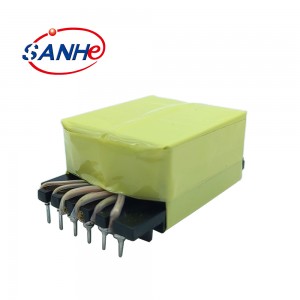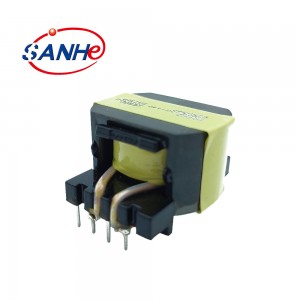Switching transformers are needed in switching power supplies. So what are switching transformers? What are the working principles and functions of switching transformers? Let's understand them.
·Introduction
The switching transformer refers to the transformer used in the switching power supply. It works in a pulse state with a frequency of ten to tens of kilohertz or even hundreds of kilohertz. The iron core is generally made of ferrite material.
·Working principle of switching transformer
A transformer is an electrostatic device made using the principle of electromagnetic induction. When the primary coil of the transformer is connected to an AC power source, the iron core produces an alternating magnetic flux. The switching power supply is controlled by the circuit, and the switch tube switches at high speed.
Converting direct current to high frequency alternating current is supplied to a transformer for conversion, thereby generating one or more sets of voltages. Since the efficiency of high frequency AC in the transformer circuit is much higher than 50Hz, all switching transformers can be made very small, thereby reducing the cost.
·The role of switching transformers
The main functions of switching transformers are power transmission, voltage conversion and insulation.
Its main advantages are small size, high efficiency, and cheap stretching. As a major soft magnetic electromagnetic component, switching transformers are widely used in switching power supply technology and power electronics technology, and are also used in high-frequency circuits such as switching power supplies.
According to the transmission power of the switching transformer, power transformers can be divided into several grades: 10kVA is high power, 10kVA~0.5kVA is medium power, 0.5kVA~25VA is low power, and below 25VA is micro power. Different transmission power, the design of power transformer is also different. The ferrite core and magnetic saturation coefficient of the power transformer are not as good as that of the silicon steel sheet core, resulting in very little energy per Hertz of AC power transfer. But he works in a high-frequency circuit, and the energy exchange frequency per unit time interval is very high (1000 times that of a low-frequency transformer). Taken together, its efficiency can reach dozens of times that of low-frequency transformers.
·Another function of the switching transformer is that it has a feedback winding
The feedback winding provides a positive feedback signal to the PWM IC, causing it to generate high-frequency oscillation together with the secondary winding, so that the DC entering the primary winding of the transformer has a large AC component, and the high-frequency AC component is isolated by the transformer core, forming a secondary Pure high-frequency AC, which is rectified and filtered to supply electrical equipment. The feedback winding can adjust the output voltage to a stable value. To sum up, the switching transformer plays the role of power transmission, voltage conversion and insulation.
Post time: Oct-07-2022


